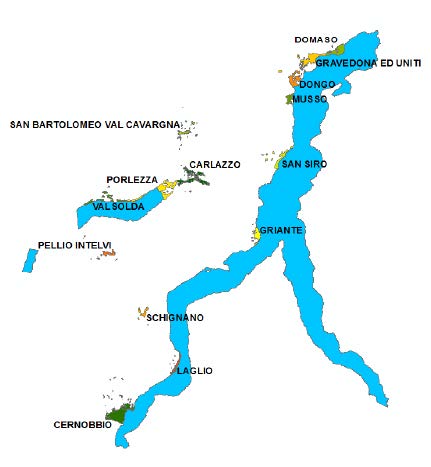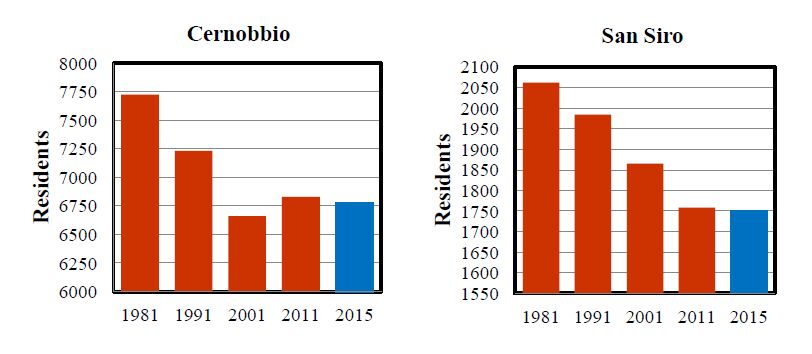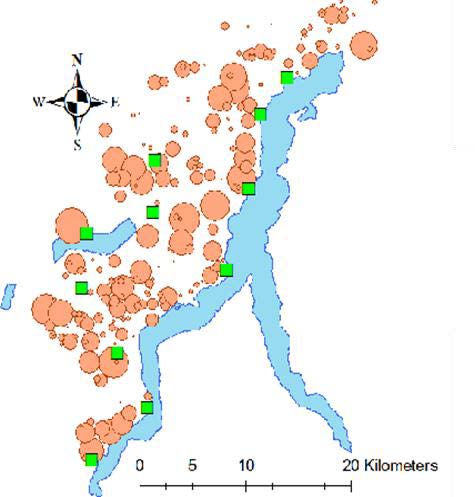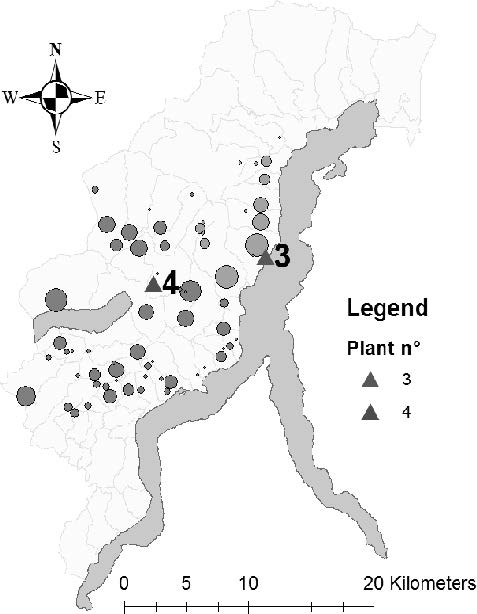|
[1]
|
EurObserv’ER (2015) Solid biomass barometer 2014. Available from: www.eurobserv-er.org. Last accessed Dec 2, 2015.
|
|
[2]
|
Kopetz H (2013) Renewable resources: Build a biomass energy market. Nature 494: 29-31. doi: 10.1038/494029a

|
|
[3]
|
Kosinkova J, Doshi A, Maire J, et al. (2015) Measuring the regional availability of biomass for biofuels and the potential for microalgae. Renew sust energ rev 49: 1271-1285. doi: 10.1016/j.rser.2015.04.084

|
|
[4]
|
Sacchelli S, De Meo I, Paletto A (2012) Bioenergy production and forest multifunctionality: A trade-off analysis using multiscale GIS model in a case study in Italy. Appl energ 104: 10-20.
|
|
[5]
|
Sartor K, Quoilin S, Dewallef P (2014) Simulation and optimization of a CHP biomass plant and district heating network. Appl energ 130: 474-483. doi: 10.1016/j.apenergy.2014.01.097

|
|
[6]
|
Zamora-Cristales R, Sessions J, Boston K, et al. (2015) Economic Optimization of Forest Biomass Processing and Transport in the Pacific Northwest USA. Forest sci 61: 220-234. doi: 10.5849/forsci.13-158

|
|
[7]
|
Andersen F, Iturmendi F, Espinosa S, et al. (2012) Optimal design and planning of biodiesel supply chain with land competition. Comput chem eng 47: 170-182. doi: 10.1016/j.compchemeng.2012.06.044

|
|
[8]
|
Čuček L, Lam HL, Klemeš JJ, et al. (2010) Synthesis of regional networks for the supply of energy and bioproducts. Clean technol environ policy 2: 635-645.
|
|
[9]
|
Leão RRCC, de Campos CL, Hamacher S, et al. (2011) Optimization of biodiesel supply chains based on small farmers: A case study in Brazil. Bioresource technol 102: 8958-8963. doi: 10.1016/j.biortech.2011.07.002

|
|
[10]
|
Sharma B, Ingalls RG, Jones CL, et al. (2013) Biomass supply chain design and analysis: Basis, overview, modeling, challenges, and future. Renew sust energ rev 24: 608-627. doi: 10.1016/j.rser.2013.03.049

|
|
[11]
|
Freppaz D, Minciardi R, Robba M, et al. (2004) Optimizing forest biomass exploitation for energy supply at a regional level. Biomass bioenerg 26: 15-25. doi: 10.1016/S0961-9534(03)00079-5

|
|
[12]
|
Fiorese G, Guariso G (2010) A GIS-based approach to evaluate biomass potential from energy crops at regional scale. Environ modell softw 25: 702-711. doi: 10.1016/j.envsoft.2009.11.008

|
|
[13]
|
Evans A, Strezov V, Evans TJ (2010) Sustainability considerations for electricity generation from biomass. Renew sust energ rev 14: 1419-1427. doi: 10.1016/j.rser.2010.01.010

|
|
[14]
|
Lähtinen K, Myllyviita T, Leskinen P, et al. (2014) A systematic literature review on indicators to assess local sustainability of forest energy production. Renew sust energ rev 40: 1202-1216. doi: 10.1016/j.rser.2014.07.060

|
|
[15]
|
Pérez-Fortes M, Laı́nez-Aguirre JM, Arranz-Piera P, et al. (2012) Design of regional and sustainable bio-based networks for electricity generation using a multi-objective MILP approach. Energy 44: 79-95. doi: 10.1016/j.energy.2012.01.033

|
|
[16]
|
Fiorese G, Gatto M, Guariso G (2013) Optimisation of combustion bioenergy in a farming district under different localisation strategies. Biomass bioenerg 58: 20-30. doi: 10.1016/j.biombioe.2013.07.018

|
|
[17]
|
Baglivi A, Fiorese G, Guariso G, et al. (2015) Energy and GHG Emission Assessments of Biodiesel Production in Mato Grosso, Brazil, In: Bhardwaj AK, Zenone T, Chen J (Eds.) Sustainable Biofuels, Berlin: De gruyter, 267-294.
|
|
[18]
|
Newell R G, Pizer W A, Raimi D (2014) Carbon Market Lessons and Global Policy Outlook. Science 343: 1316-1317. doi: 10.1126/science.1246907

|
|
[19]
|
GSE (Gestore Servizi Energetici) (2015) Rapporto sulle aste di quote europee di emission (in Italian) Available from: http://www.gse.it/it/Gas e servizi energetici/Aste CO2/Pagine/default.aspx.
|
|
[20]
|
Frombo F, Minciardi R, Robba M, et al. (2009) A decision support system for planning biomass-based energy production. Energy 34: 362-369. doi: 10.1016/j.energy.2008.10.012

|
|
[21]
|
CEER (2014) Certificazione energetica regionale, Regione Lombardia (in Italian).Available from: http://certenergy.it/certificazione-energetica-lombardia/502-lombardiacatasto-energetico-regionale-accessibile-a-tutti.html.
|
|
[22]
|
Regione Lombardia (2015) Sistema Informatico Regionale Energia (in Italian). Available from: http://sirena.cestec.eu.
|
|
[23]
|
ISTAT (2015) Database: Servizio Turismo (in Italian). Available from: http://www.istat.it
|
|
[24]
|
Regione Lombardia (2015) Cartografia regionale (in Italian): Available from:
http://www.geoportale.regione.lombardia.it.
|
|
[25]
|
Fiorese G, Guariso G (2013) Modeling the role of forests in a regional carbon mitigation plan. Renew energy 52: 175-182. doi: 10.1016/j.renene.2012.09.060

|
|
[26]
|
Rentizelas A, Karellas S, Kakaras E, et al. (2009) Comparative techno- economic analysis of ORC and gasification for bioenergy applications. Energ convers manage50: 674-681.
|
|
[27]
|
Dept. of Energy, Politecnico di Milano (2013) Costi di produzione di energia elettrica da fonti rinnovabili (Electric energy production costs from renewable sources),AEEGSI Report (in Italian).
|
|
[28]
|
Mosier N, Wyman C, Dale B, et al. (2005) Features of promising technologies for pretreatment of lignocellulosic biomass. Bioresource technol 96: 673-686.
|
|
[29]
|
Energy and Strategy Group (2013) Biomass Executive Energy Report, Dipartimento di Ingegneria Gestionale, Politecnico di Milano (in Italian).
|
|
[30]
|
AEEGSI, Italian National Energy Authority (2015) Statistical Data. Available at: http://www.autorita.energia.it.
|
|
[31]
|
Moiseyev A, Solberg B, Maarit A, Kallio I (2013) Wood biomass use for energy in Europe under different assumptions of coal, gas and CO2 emission prices and market conditions. J forest econ 19: 432-449. doi: 10.1016/j.jfe.2013.10.001

|





















 DownLoad:
DownLoad: